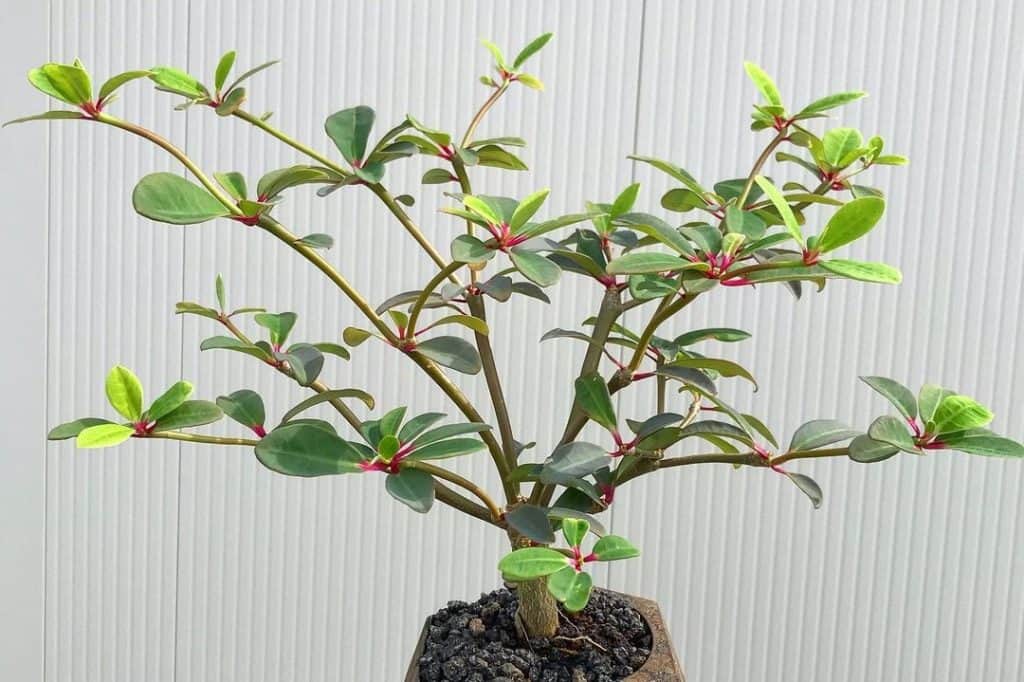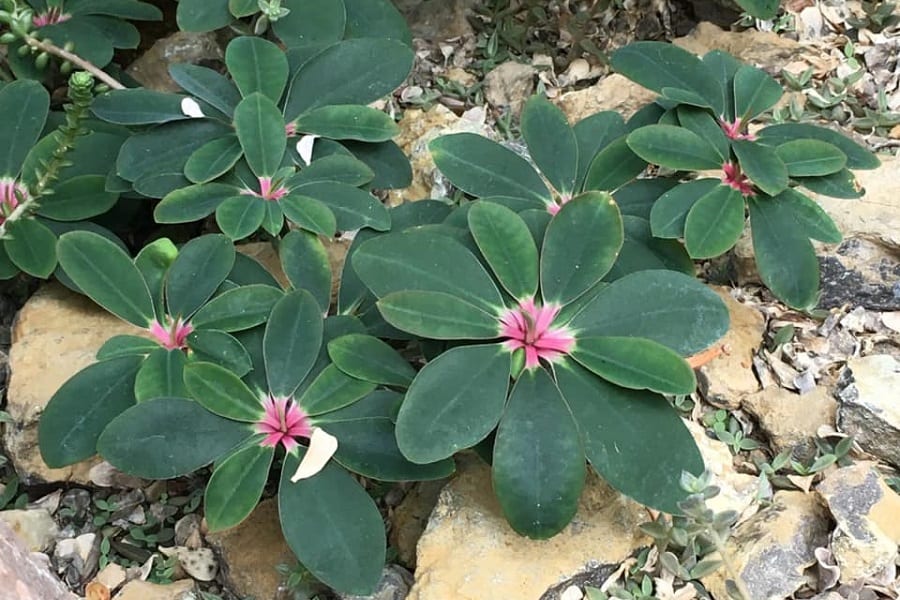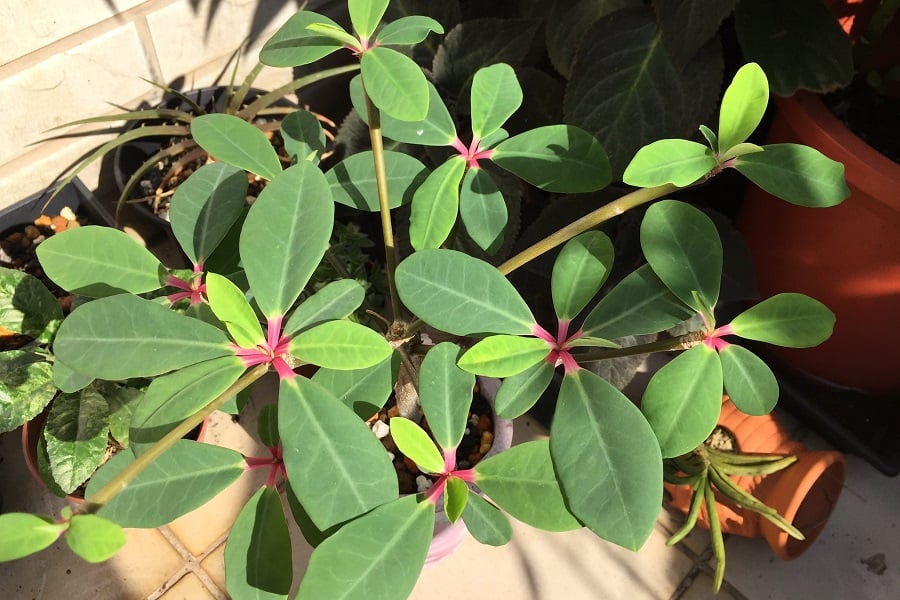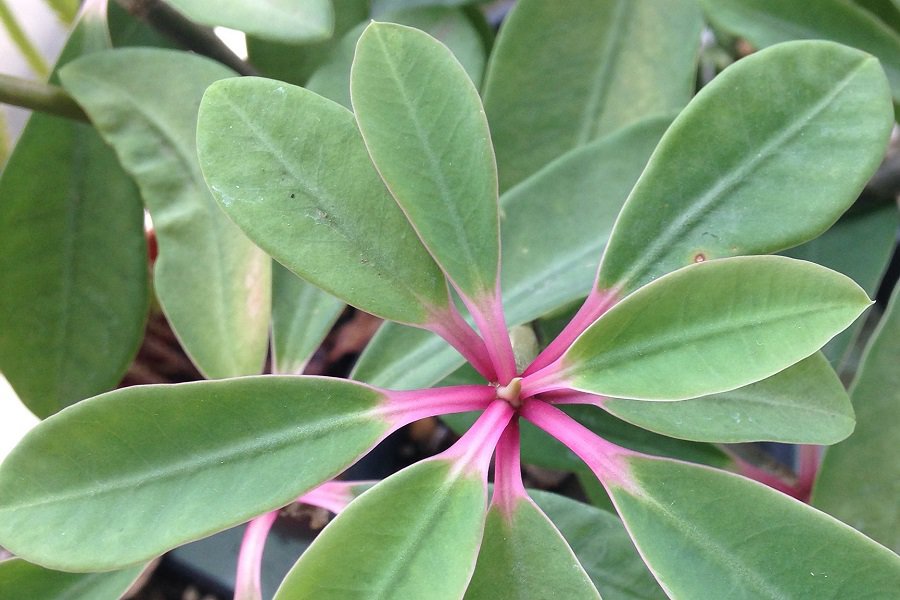Euphorbia bongolavensis: Defying Expectations in the World of Xerophytes
Prepare to be captivated by the unassuming yet remarkable Euphorbia bongolavensis! This slow-growing desert dweller may appear unassuming at first glance, but it boasts an array of intriguing features that are sure to pique your curiosity. Get ready to embark on an enchanting journey as we unveil the secrets of this resilient plant that defies expectations in the world of xerophytes.

Contents
About Euphorbia bongolavensis
Euphorbia bongolavensis, a member of the Euphorbiaceae family, is a small shrub that can reach heights of up to 3 feet. Its dense, short stems bear clusters of leaves that open into an umbrella-like crown, creating a striking visual display. Contrary to popular belief, Euphorbia bongolavensis is not a true succulent but rather a xerophyte, a plant adapted to arid environments.
The base of its leaves boasts a vibrant red hue, while the remaining portions showcase a captivating bluish-green color. When in bloom, this extraordinary plant produces small yellow flowers, adding a touch of warmth to its already mesmerizing appearance.
Check this out:
200 Types of Euphorbia With Pictures
Euphorbia bongolavensis Care Guide
Light Requirements
Euphorbia bongolavensis thrives in full sun, requiring at least 6 hours of direct sunlight daily. If grown indoors, position it near a south-facing window or invest in a high-quality grow light to mimic natural sunlight conditions.
Watering Routine
During the active growth period from spring to fall, water your plant when the top 2 inches of soil are completely dry, typically once a week. In winter, reduce watering to once a month or when the plant shows signs of wilting. Always water in the morning to prepare the plant for the day’s sun exposure.

Soil Needs
To ensure optimal growth, choose a well-draining soil mix designed for succulents or xerophytes. A blend of potting soil, sand, and perlite in equal parts can create the perfect environment for your Euphorbia bongolavensis to flourish.
Fertilizing for Success
While Euphorbia bongolavensis has modest nutrient needs, occasional feeding can promote healthy growth. Apply a diluted liquid fertilizer or organic compost during the growing season, avoiding feeding during winter dormancy.
Temperature and Humidity
Euphorbia bongolavensis thrives in warm temperatures ranging from 70°F to 80°F during the day and 55°F to 65°F at night. It can tolerate dry indoor conditions but appreciates moderate humidity levels around 50%.

Pests and Problems
Keep a watchful eye for spider mites and mealybugs, common pests that can quickly infest your plant if left unchecked. Address any infestations promptly to ensure the health of your Euphorbia bongolavensis.
Pruning and Maintenance
Regular pruning is not necessary for Euphorbia bongolavensis, but you can remove any dead or damaged stems to maintain its aesthetic appeal.
Potting and Repotting
Choose a well-draining container with ample drainage holes to prevent waterlogging. Repot your Euphorbia bongolavensis every 2-3 years in the spring, using a fresh soil mix to provide optimal growing conditions.
Euphorbia bongolavensis Propagation

Euphorbia bongolavensis can be propagated through seeds or stem cuttings, offering an opportunity to expand your collection or share this unique plant with fellow enthusiasts.
Seed Propagation:
- Prepare a well-draining seed-starting mix by combining equal parts of commercial seed mix and coarse sand.
- Sow the seeds and provide consistent warmth. Germination can take 2-6 months, so patience is key.
Stem Cutting Propagation:
- Take a 4-6 inch stem cutting, allowing it to callus over for a few days.
- Plant the cutting in a well-draining soil mix, ensuring at least two nodes are buried.
- Water sparingly and provide bright, indirect light until roots establish themselves.
With its captivating appearance, resilience, and ease of care, Euphorbia bongolavensis is a true gem in the world of xerophytes. Embrace the opportunity to cultivate this remarkable plant and witness its unique beauty unfold before your eyes.
